5. Suburbia (1983)
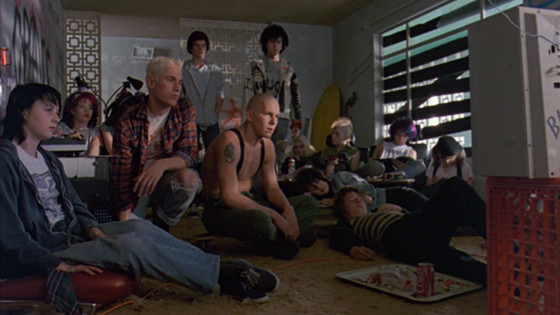
Shortly after the success of The Decline of Western Civilization, filmmaker and “rock ‘n roll anthropologist” Penelope Spheeris remained fascinated with the punk scene and next she set about writing and directing her first narrative film, 1983’s Suburbia. “A clear-eyed, compassionate melodrama about a bunch of young dropouts who call themselves ‘The Rejected’ or, for short, the TR’s,” raved New York Times critic Vincent Canby, adding that the film is “probably the best teen-agers-in-revolt movie since Jonathan Kaplan’s Over the Edge.”
As Suburbia unspools it’s easy to see how this tale of runaways and retribution inspired Saulnier’s Green Room a few decades later. From vicious and lethal attack dogs, to angry, mislaid youth and overwhelming despair impelling extreme action, this is not a film to be taken too lightly, particularly considering the prophetic nature of Spheeris’ work. In a film populated by subjugated suburban punks who squat in abandoned tract homes––which they’ve dubbed “TR homes” after their “The Rejected” moniker––these neglected and rejected kids form a family, of sorts.
The largely likeable rabble are portrayed by Bill Coyne, Timothy O’Brien, Chris Pedersen, and Flea (of Red Hot Chili Peppers fame), and soon, once their hard to ignore presence is known in the slated for demolition suburb they now call home, things get ugly.
Not as empty as their ‘hood appears, the remaining neighbors don’t take kindly to the mohawked misanthropes in their midst. Soon these spiteful adults are organizing a gang of redneck vigilantes to shit stomp the punks. But these TR kids won’t go down without a fight and they’re craftier and more clever than any adult gives them credit for.
So many aspects of this gritty, ugly, determined, and credible punk rock chronicle works, the cast of actual punks, almost all non actors, adds an honesty and a palpable nostalgia that other Los Angeles-set films of the period lack. Angry, violent, and unfeigned, Suburbia is the real deal.
4. Straw Dogs (1971)
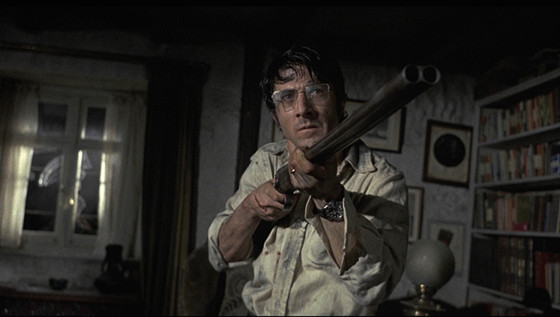
Like Green Room, Sam Peckinpah’s controversial thriller Straw Dogs is brutal and bloodthirsty but also attenuated and slyly nuanced.
To escape the mental fatigue and social unrest of Vietnam-era America, mathematician David (Dustin Hoffman) and wife Amy Summer (Susan George) move to a small Cornish village––where Amy grew up.
The village’s men, who David patronizes as hayseeds, become hostile and bullying to the couple and this escalates to a shocking gang rape. David, a pacifist, must take action as this cruel, gripping, and increasingly violent meditation on machismo and manhood limps and staggers towards its inevitably ugly, bloody, and brutal destination.
“Nihilism leaches from every frame,” raved Total Film’s Simon Kinner, adding “Peckinpah’s Cornwall resembles the Old West imagined as Hammer horror.” The distressing bloody causatum takes a toll on the audience for sure, the lengthy rape scene and the questionable morality makes Straw Dogs a challenging film to reconcile with. A stunning experience, proceed with caution or let this sleeping dog lay.
3. Southern Comfort (1981)
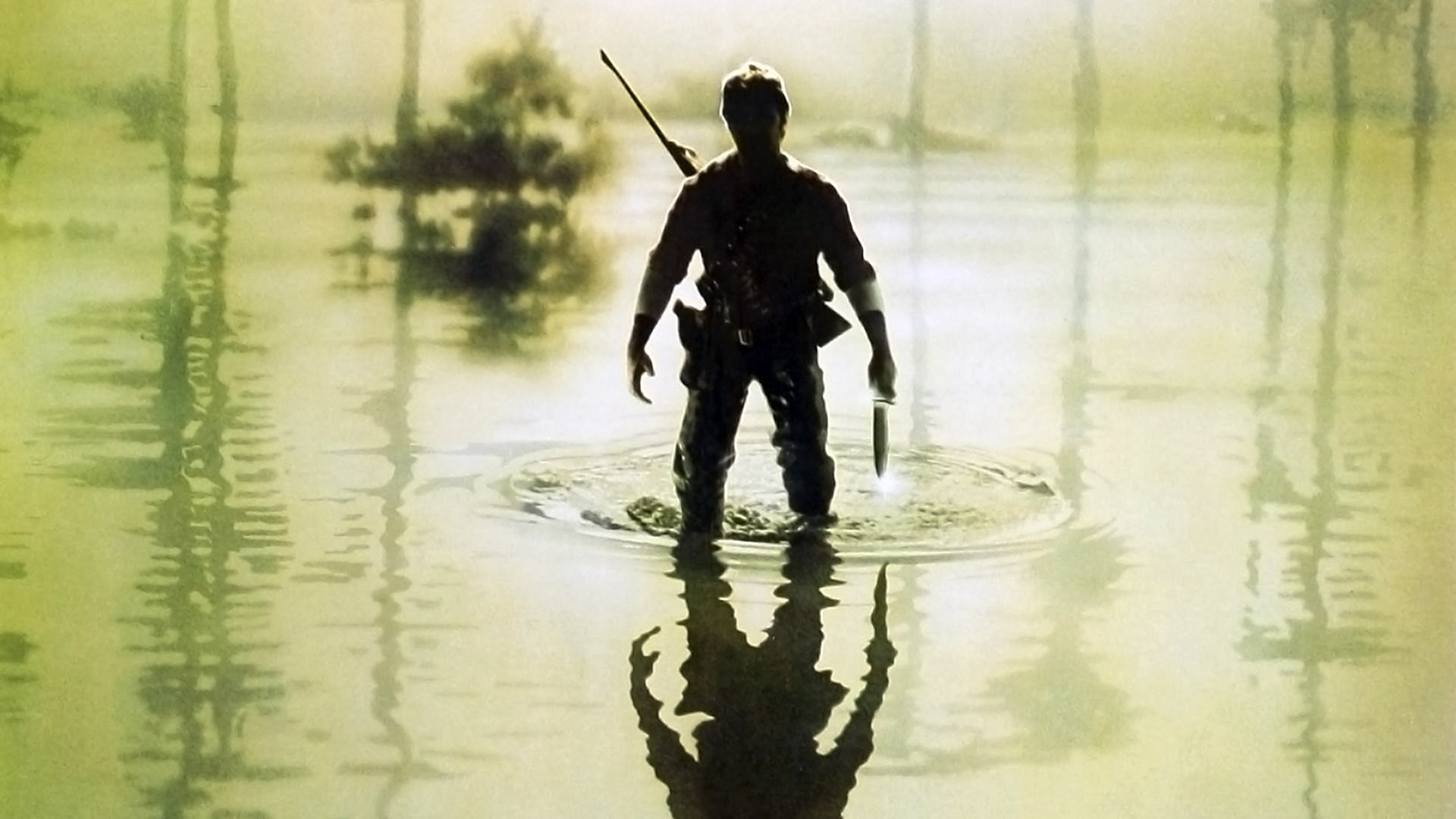
Atmospheric, expertly paced, and uncomfortably agitated, Walter Hill’s edgy action thriller Southern Comfort is a survival tale with teeth. Co-written by Hill, Michael Kane, and frequent collaborator David Giler, this Louisiana-set exercise in mental anguish and decidedly offbeat action concerns a group of Vietnam vets, now National Guard reservists (including Keith Carradine, Peter Coyote, Powers Boothe, and Fred Ward) who are participating in a training exercise in the bayou.
Things get nerve-wracking and undeniably alarming when they discover their maps are grossly out of date and inaccurate, and they’re loss. But here their troubles only begin after they ripoff some louring Cajun locals itching to fight. I won’t divulge any more plot points here, suffice it to say that critics at the time couldn’t see past a few similarities to John Boorman’s Deliverance (see the next entry on the list), with little concern to the evocative and well-informed Vietnam war metaphor, and exquisite action sequences.
Thankfully the passing years have been kind to Southern Comfort, perhaps Hill’s most undervalued and overlooked film, which now has something of a cult following, and has aged rather well––as has Ry Cooder’s chilling score.
Certainly many of Green Room’s adrenaline-surging shocks, super realist violence, and survivalism psychology stems from this ferocious little film. Check it out.
2. Deliverance (1972)
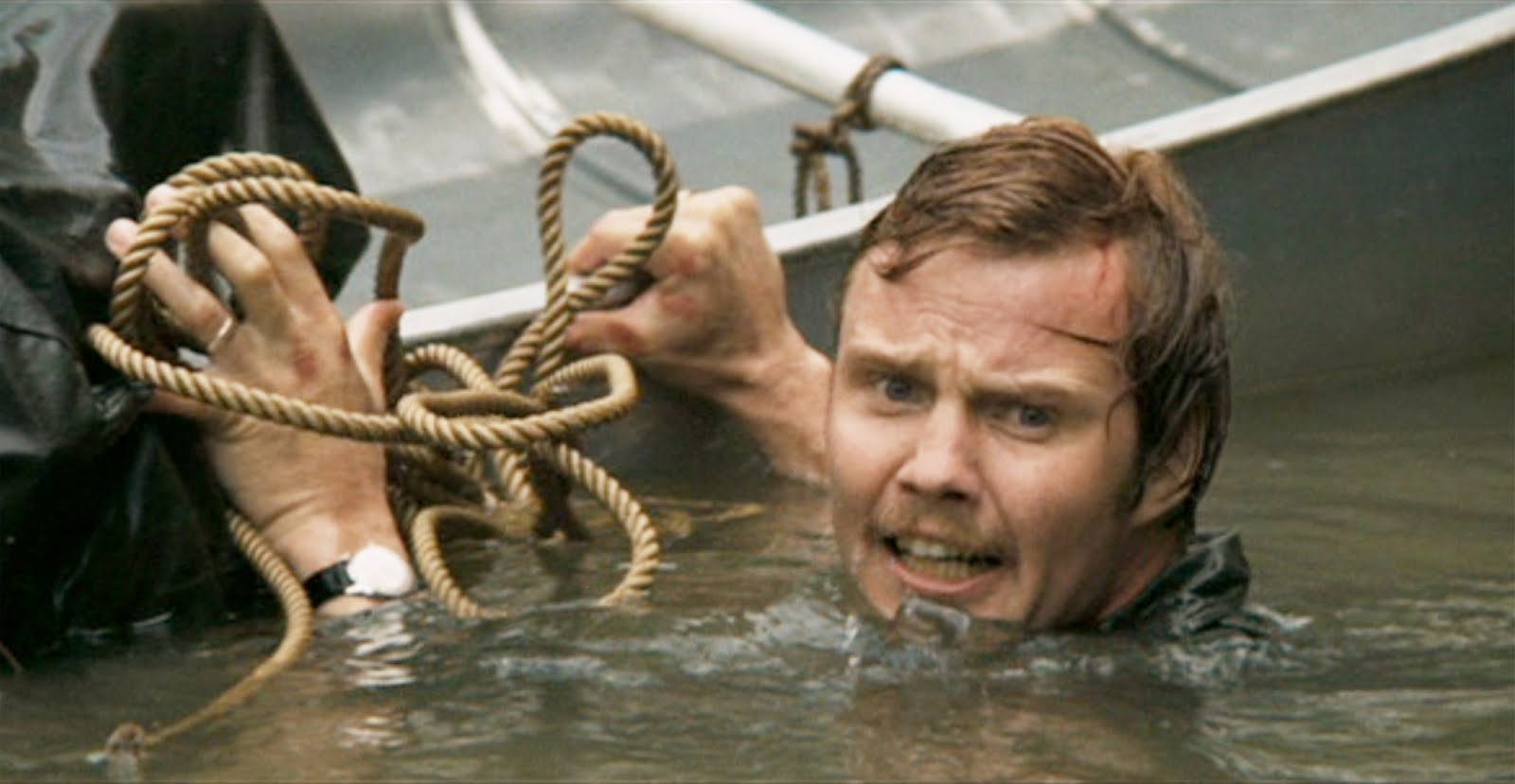
“[Deliverance] is the best film I’ve ever done,” says Burt Reynolds. “It’s a picture that just picks you up and sends you crashing against the rocks. You feel everything and just crawl out of the theater.” And while this is most certainly true, the same visceral and physical response could also apply to those who saw Saulnier’s Green Room on the big screen. I caught a midnight screening at a packed film festival and when the audience wasn’t screaming or cheering I think they were largely happy to be alive. I didn’t think I’d have survivor’s guilt by the film’s end, but I did, and I remember saying to my friend, “This must be what it was like to see Deliverance for the first time back in ‘72.”
On the surface, John Boorman’s Deliverance is a brilliant psychological shocker, and the depths underneath are deep-seated and maybe even unfathomable. To say it’s a film about man versus nature is to dumb it down far too much, and the same goes if we’re to ascribe it as a cautionary tale of city boys squaring off against redneck hicks. These men and their waking nightmare cannot be reduced to sheer cliché.
Deliverance opens with four men from the city looking to relax boy-scouts’ delight style. Lewis (Reynolds) the survivalist, Ed (Jon Voight) the quiet one, Bobby (Ned Beatty) whose plain-spoken, and Drew (Ronny Cox) who’s the sensitive one. They could have just gone golfing but opted for the more masculine undertaking of a marginally dangerous downriver canoe trip in dense woodland that’s soon to be demoed by a dam that will turn it all into a lake.
Faster than you can spit out: “He got a real pretty mouth ain’t he?” the men enter a world of exceedingly sexualized violence in the boondocks of Georgia. Their journey becomes a nightmare of self-discovery, breathtaking terror, and every kind of brutal you can think of.
1. Assault on Precinct 13 (1976)
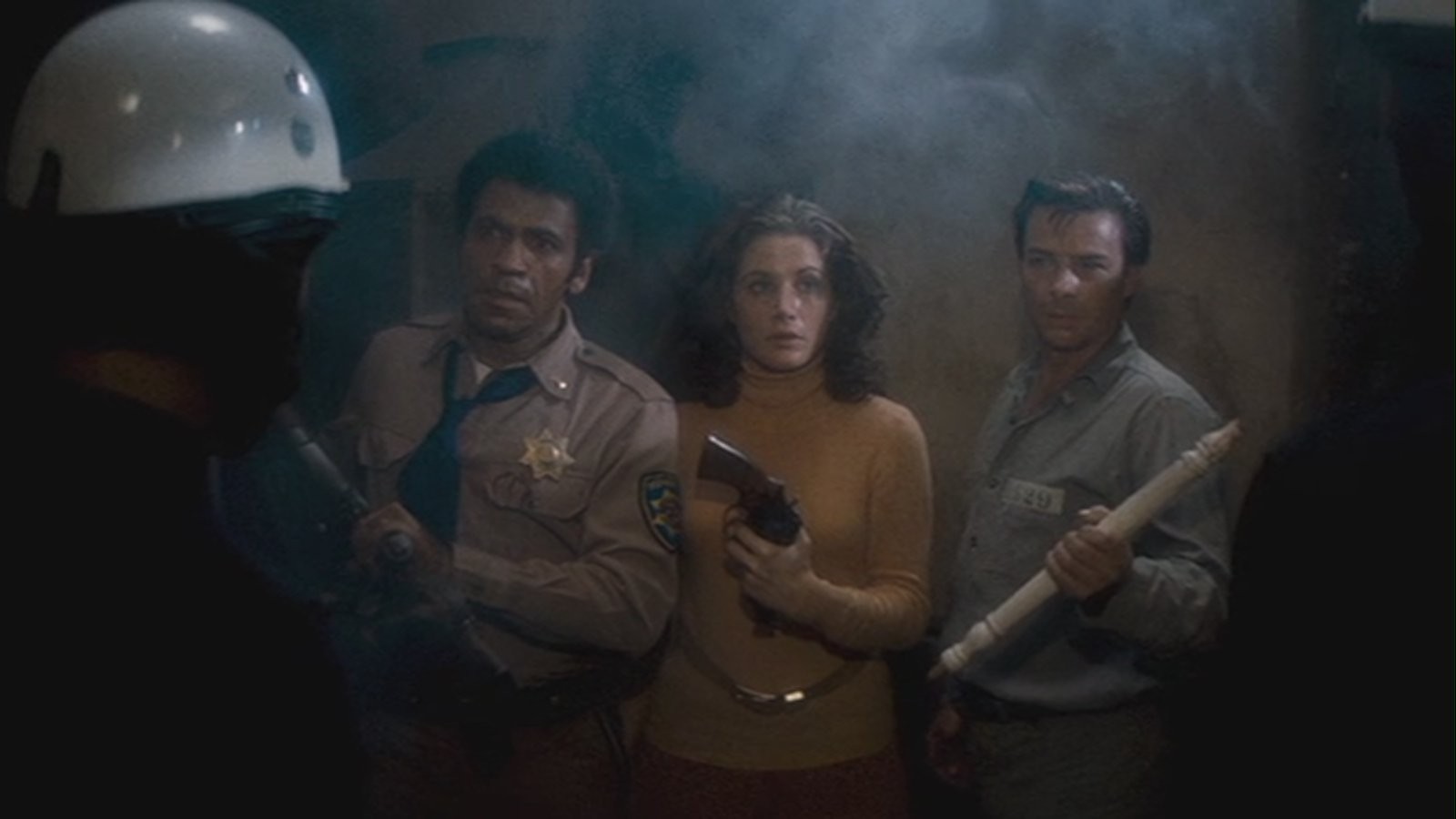
“It’s a goddamn siege,” musters Lt. Ethan Bishop (Austin Stoker) in his isolated police precinct, encircled by a brutal street gang bound by a chilling blood oath to avenge their fallen.
John Carpenter’s first professional motion picture, Assault on Precinct 13 bears all of the director’s familiar hallmarks—including his awesomely intense electronic synthesizer score (one of his absolute greatest)—making for a stylish siege thriller that links elements of both the Western and the horror genre with his developing dangerous style. Why Carpenter himself has happily proclaimed that, “basically, this is an exploitation action picture modeled after Rio Bravo,” and there you have it.
Partially inspired by exploitation cinema, in the midst of its mid-70s heyday, Carpenter’s crime-thriller doesn’t pull any punches in its violent depiction of urban violence and cultural disparity––the infamous ice cream truck child murder still shocks some 40 years on. After the L.A. police brutally massacre seven members of a don’t-fuck-with-us street gang it incites the gang members to make the aforementioned blood oath and swear vengeance via the drawn out destruction of the police police station precinct.
Carpenter wisely and intentionally avoids any socio-political false fronts, focussing on an alternately comedic and climactic thriller that spawned a so-so remake, loads of imitators, and of course, for the purposes of this list, put a brutal wind in the sails of Jeremy Saulnier when he set about Green Room.
Assault on Precinct 13 stands not just as one of Carpenter’s finest films, but one of the best actioners of its era, a joyfully deranged genre mashup par excellence, and an uncompromising cult classic like no other. The film also earns accolades for slyly supporting a subversive slant on racial and sexual politics, and the results remain absolutely outstanding.
Author Bio: Shane Scott-Travis is a film critic, screenwriter, comic book author/illustrator and cineaste. Currently residing in Vancouver, Canada, Shane can often be found at the cinema, the dog park, or off in a corner someplace, paraphrasing Groucho Marx. Follow Shane on Twitter @ShaneScottravis.